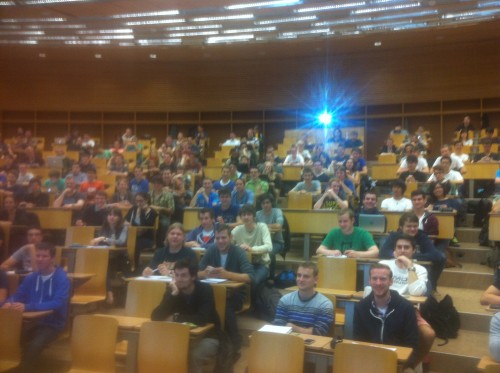The Paris computer science bookstore Le Monde en Tique is organizing, this coming Friday, Oct. 3, starting at 5 PM, a signing session for my book Agile! The Good, the Hype and the Ugly [1].
About the book (for readers new to this site): it provides a cold-blooded analysis of agile methods and examines their claims, their value and their limitations.
Le Monde en Tique is well known to technology aficionados in Paris and far beyond. Jean Demétreaux and his team established it at a time when it was hard, slow and expensive to order technical books from international publishers. While other legendary bookstores such a Stacey’s in San Francisco had to close in response to competition from chain stores and Internet offerings, le Monde en Tique (a pun on “tique” words such as informatics and bureautics, and also on ICT, in French TIC) has found new markets and lives on. It is set in a historic building in the medieval heart of Paris [2]. They already organized such book signings for the publication of the French translation of Object-Oriented Software Construction [3] and of Touch of Class, the latter reported in this blog [4]. If you are nearby, please come on Friday!
References
[1] Bertrand Meyer: Agile! The Good, the Hype and the Ugly, Springer, 2014, Amazon page: here, book page: here.
[2] Book signing announcement with access instructions: here.
[3] Bertrand Meyer: Conception et Programmation Orientées Objet (translation of Object-Oriented Software Construction, 2nd edition, Prentice Hall), Eyrolles, Paris 2008, book page here.
[4] Knuth and Company, article on this blog, 19 October 2009, see here.
